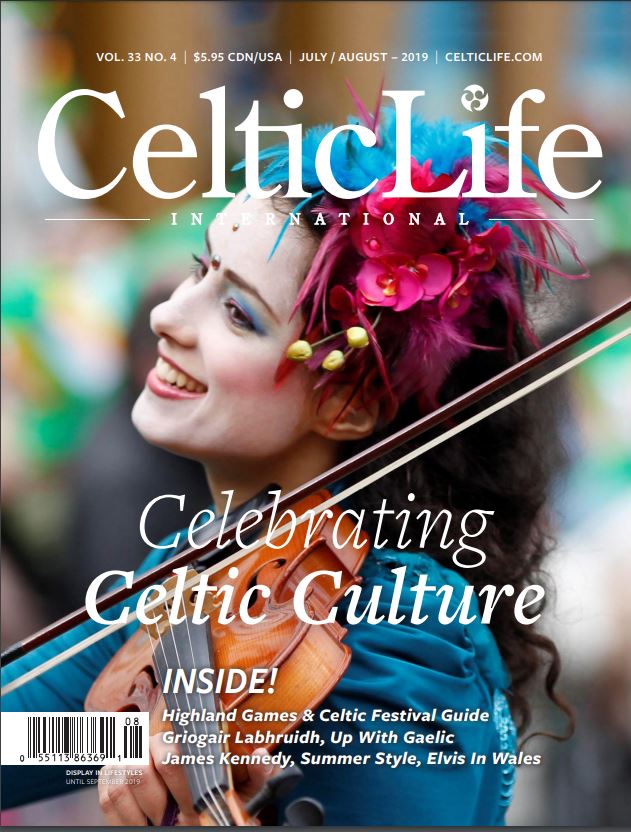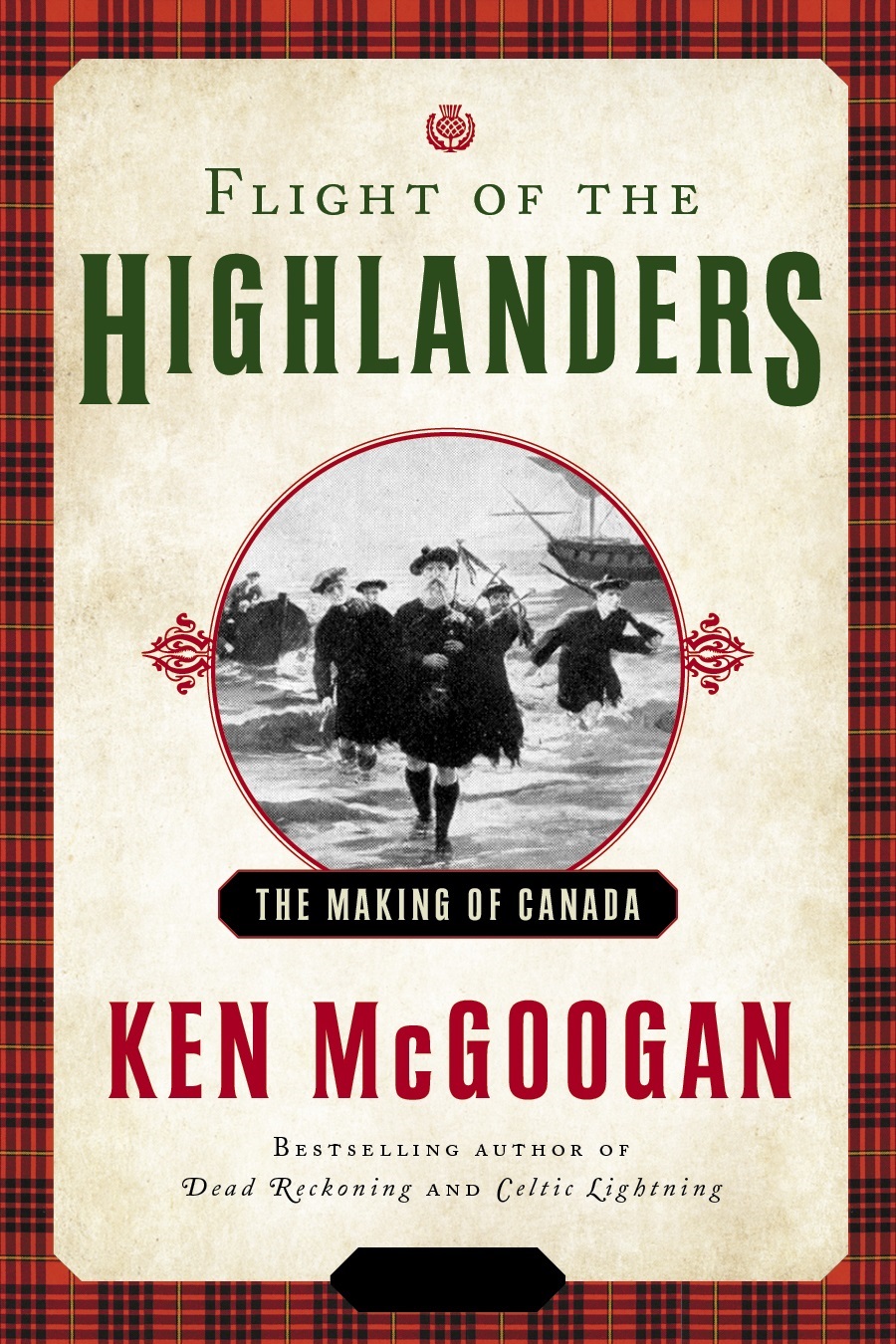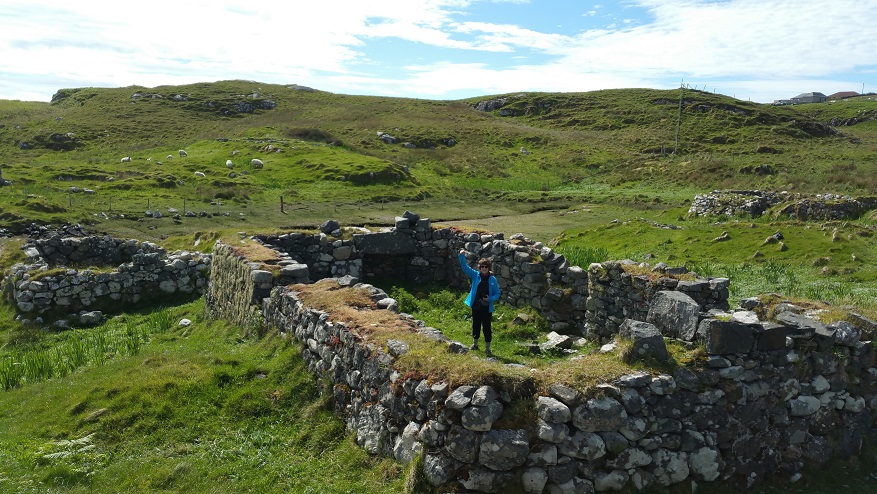Celtic Life Meets Most Hated Man in Scotland
The July-August issue of Celtic Life International is turning up at newsstands around the world. It features an excerpt from my forthcoming book Flight of the Highlanders: The Making of Canada. Set it up this way:
In his bestsellers How the Scots Invented Canada and Celtic Lightning, Ken McGoogan wrote about how, in the 18thand 19th centuries, Scotland (and Ireland) sent Canada numerous talented, high-energy figures who led the way in forging a nation. In his forthcoming book, Flight of the Highlanders: The Making of Canada, Ken turns to the common people, and particularly to those who came to Canada as a result of the Highland Clearances. He tells the story of those forgotten Scots who, frequently betrayed by their own chieftains and evicted from their ancestral lands, found themselves battling hardship, hunger, and hostility in a New World they could scarcely have imagined . . . .
Chapter 16: The Most Hated Man in Scotland
In the mid-nineteenth
century, Colonel John Gordon lived in the fabulous Cluny Castle in
Aberdeenshire. He owned six slave plantations in the West Indies and was said
to be “the richest commoner” in Britain. Gordon became “the most hated man in
Scotland” not because he was a slave-owner, and not because he was wealthy, but
because he stayed that way by ruthlessly squeezing the lifeblood out of poor
tenant farmers eking out a living on his massive land holdings—estates that
included, as of 1838, the entire island of Barra. . . .
Enter
Colonel John Gordon, who acquired not the entire estate but the three outer
islands, where a potato famine began taking a toll in the mid-1840s, reducing
people to penury. The Reverend Norman MacLeod wrote: “The scene of wretchedness
which we witnessed, as we entered on the estate of Col. Gordon, was deplorable,
nay, heart-rending. On the beach the whole population of the country seemed to
be met, gathering cockles . . . I never witnessed such countenances—starvation
on many faces—the children with their melancholy looks, big looking knees,
shriveled legs, hollow eyes, swollen-like bellies—God help them, I never did
witness such wretchedness.”
By
1848, the rents paid by these people had earned Gordon a return of less than 66
percent on his investment. Meanwhile, he had been compelled to expend £8,000 in
famine relief. The colonel had not attained his splendiferous lifestyle by
letting this sort of thing continue. He acted, and today one result of his
handiwork can be discovered on the east side of Barra at an archaeological site
that was once a thriving village.
You
won’t find “Balnabodach” listed in the guidebooks or even on maps of the Outer
Hebrides. But if on Barra you drive seven kilometres north out of Castlebay on
the one-lane highway that encircles the island, the A888, you should be able to
spot a series of ruins on the eastern side of the road, down the hill as you
approach Loch Obe. You may have to scramble a bit (think trial and error), but
you can make your way through marshy ground to stone ruins that once were Barra
blackhouses. To wander among them, careful not to do damage, is to get as close
as anyone can to those who lived here once upon a time.
Here,
along a freshwater stream that tumbles down the hill to the loch, people have
lived off and on for centuries. The loch connects to the open sea by a narrow, four-hundred-metre
channel that once afforded excellent protection against sea raiders. Peat
deposits provided fuel for fires, and cows and sheep could graze on the gentler
slopes. In 1996, according to an Isle of Barra website, archaeologists
discovered a barbed flint arrowhead dating from around 2,000 BC. And people who
lived here during the Iron Age, between 200 BC and AD 200, left nearly 250
pieces of pottery, as well as flint tools and pumice stones used for scrubbing
animal skins.
By
the time of Scotland’s first census, in 1841, Balnabodach was home to eight
households and twenty-six people. They lived in Barra blackhouses built
during the previous century, with thick walls and single doors in one long
side. Families made do with an earthen floor and cooked and slept around
the fireplace at one end. The largest house, designated House A, once had a
wooden dresser in one corner. Here, the family displayed their finest pottery,
which comprised brightly coloured “sponge ware” from the Scottish mainland and
crockery from Stoke and Newcastle in England.
Archaeologists
found an abundance of bowls, useful for eating broth, gruel and porridge. They
turned up a clay pipe, some glass beads and copper buttons, an iron chisel and
knife, and a sharpening stone. They also found a copper thimble outside the
front door and could imagine a “woman of the household sitting on a sunny
summer day, mending an item of clothing and dropping her thimble between the
cracks in the stone.” In an atypical flight of fancy, they surmised that the
woman might well have been Anne Macdugald or her sister-in-law, Flory
Macdugald.
This
they extrapolated from the 1841 census, when Hector Macdugald and his family
probably lived in House A, which had a small room added onto one end not as a
byre for animals but for human habitation. While most of the households were
listed as crofters, one was a cottar (who farmed another tenant’s land) and
another a pauper—eighty-year-old Neil Macdugald. These families kept a few
sheep and did some fishing, but mainly they subsisted by growing potatoes and
barley.
In
the mid-to-late 1840s, the horrendous potato famine that devastated Ireland
also wreaked havoc in the Outer Hebrides. It starved Islanders on Barra and
South Uist and, less acceptably still, rendered them unable to pay their rent.
Colonel John Gordon decided to solve this problem by evicting the wretched
crofters and shipping them to Canada. He identified Balnabodach as one of the
Barra townships to be cleared and in 1851 turned loose his hired thugs.
According to oral
tradition, these well-paid hooligans forced the tenantry into boats in the safe
harbour. One young woman was out milking the family cow by the loch
when Gordon’s agents dragged her off with nothing but the clothes on her back.
A few people ran into the hills and were hunted down by dogs. They were hauled
aboard in handcuffs.
A Protestant minister
named Beatson led the evictions in Barra and the tiny island of Mingulay, which
were Roman Catholic. An eyewitness named Roderick MacNeil, remembering in the present
tense, described Beatson as “the most vigilant and
assiduous officer Colonel Gordon has. He may be seen in Castle Bay, the
principal anchorage in Barra, whenever a sail is hoisted, directing his men
like a gamekeeper with his hounds, in case any of the doomed Barra men should
escape.” One such man “took shelter on an Arran boat which Beatson boarded in a
fury, demanding his surrender. The master [one John Crawford] lifted a
hand-spike and threatened to split the minister’s skull, man of God or no, if
he did not get ashore with his dogs.”
MacNeil,
evicted from Mingulay, had never been the same since “my people were scattered,
some of them in Australia, some in Canada, and some mouldering in the dust. Oh,
the turns of the hard world! Many a trick does it play, and so it was with me.
My new house was burned over my head, and I burned my hands in rescuing my dear
little children. Oh, the suffering of the poor folk, the terrible time that
was! The land was taken from us though we were not a penny in debt, and all the
lands of the township were given to a Lowland farmer. He had always wished to
have them, and he was not content until he got them.”
Small boats ferried the Barra people to a ship called the Admiral, which then sailed forty kilometres north to Lochboisdale
in South Uist. There, on August 11, 1851, a different agent—the hot-tempered
John Fleming—invited local tenants to a compulsory public meeting, threatening
absentees with a severe fine (forty shillings). The meeting devolved into a
surprise press-ganging, as thugs forced people into boats and then onto the
ship which lay waiting to carry them to Canada. Forget gathering possessions:
they were going aboard here and now.
Two days before,
Fleming had written from South Uist to an emigration officer in Quebec. For the
last three weeks, he had been “superintending the emigration of about 1,500
souls from this country to Canada.” He had just learned “with regret” that due
to the unexpected illness of Colonel Gordon, nobody had previously notified anybody
in Quebec.
Fleming wrote that he
had already sent two ships—the Brooksby and
the Montezuma filled with passengers
in late July, and the Perthshire on
August 5. He expected “the Admiral to
be cleared out a few days hence.” He described the South Uist emigrants as
having worked “at draining, ditching, road making, &c., and I trust they
may be advantageously employed when they reach Canada in similar work, or at
railway operations. . . . Of the Barra people, part have found employment at
similar work, and part have supported themselves as fishermen, of which they
have considerable skill.”
Fleming noted that a
thousand people had been sent out two years before, “and send home encouraging
accounts to their friends here.” Colonel Gordon was providing a free passage,
clothing and shoes, and hoped that “these that are now leaving the land of
their fathers may earn a competency in the land of their adoption.”
Two resources enable us
to envision the truth of these events. The first, a relatively recent study, “The Jaws of Sheep” by James A. Stewart Jr., was
published in Proceedings of the Harvard
Celtic Colloquium for 1998. The other we have already encountered: Gloomy Memories by Donald Macleod. In
the 1850s, Macleod had emigrated to
Woodstock, Ontario, some 150 kilometres west of Toronto. Whenever he travelled
between Woodstock and Toronto, at about the halfway point he would pass through
the town of Dundas. There he interviewed numerous former Islanders, survivors
of Gordon’s 1851 Clearances.
“Hear the sobbing, sighing and throbbing,” he
wrote later. “See the confusion, hear the noise, the bitter weeping and bustle.
Hear mothers and children asking fathers and husbands, where are we going? hear
the reply, Chan eil fios againn—we
know not.” One eyewitness, Catherine Macphee of Lochdar, near the north end of South Uist,
described the evictions as “loathsome work.” She told Macleod: “I have seen big
strong men, champions of the countryside, the stalwarts of the world, being
bound on Loch Boisdale quay and cast into the ship as would be done to a batch
of horses or cattle, the bailiff and the ground officers and the policemen gathered
behind them in pursuit.”
(To read the rest of this excerpt, pick up the July-August issue of Celtic Life International. The book, Flight of the Highlanders: The Making of Canada, is now available for pre-order. It will launch in September.)


